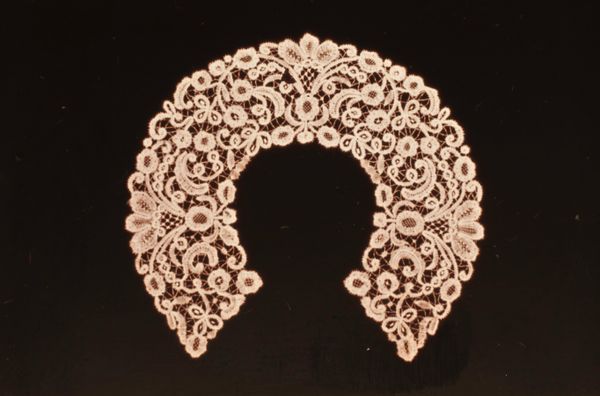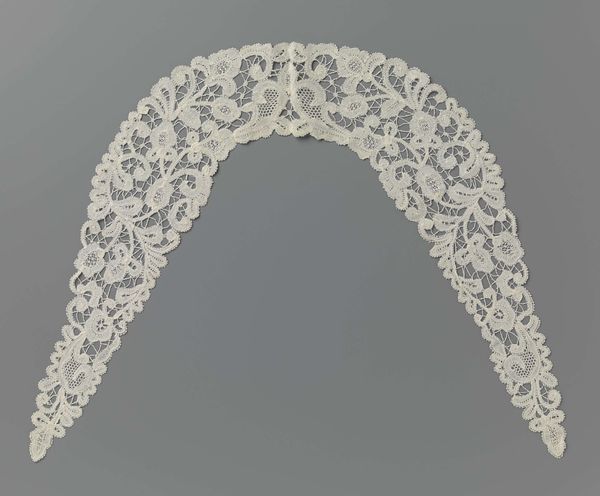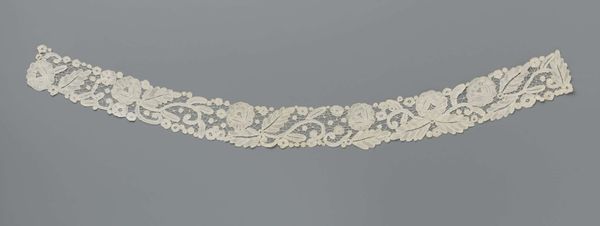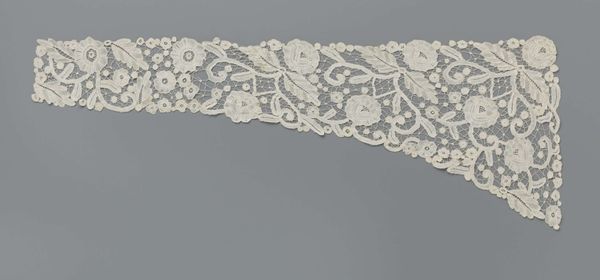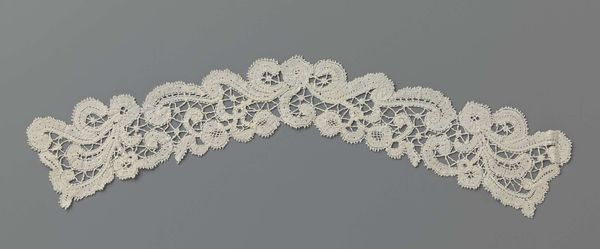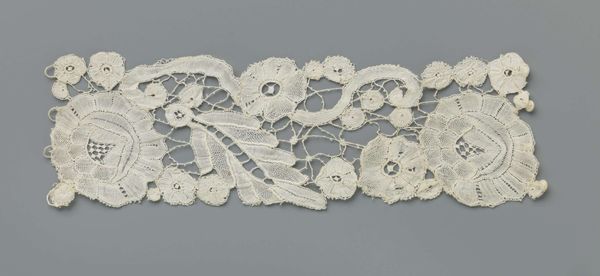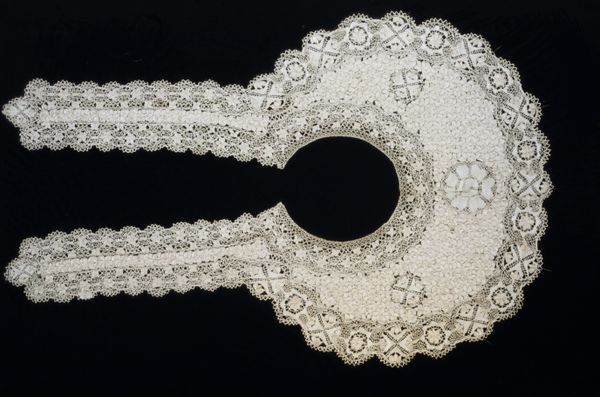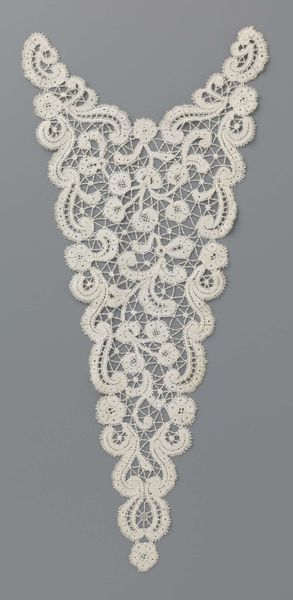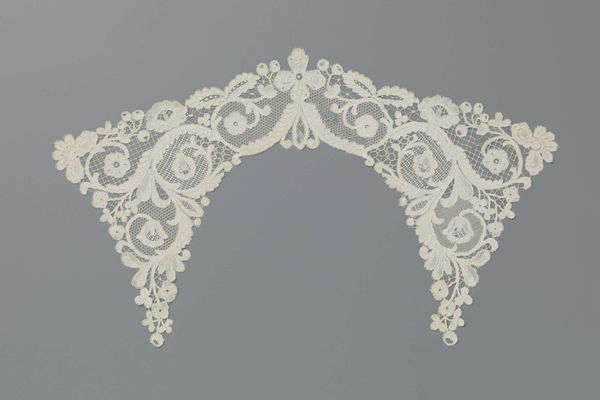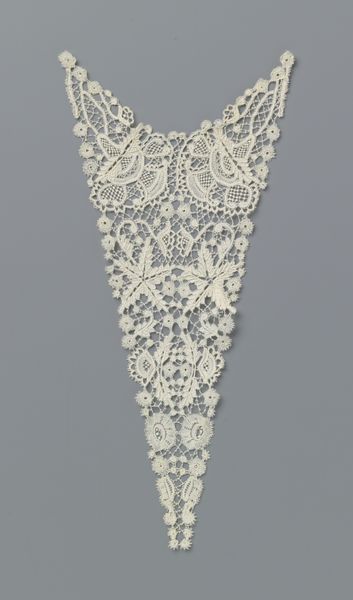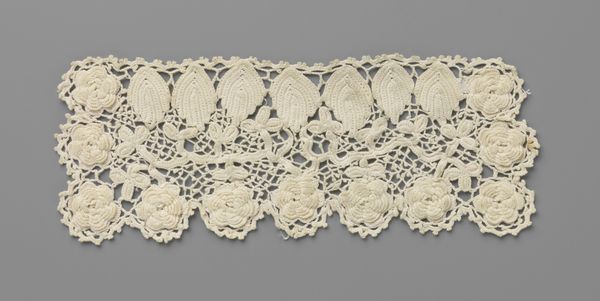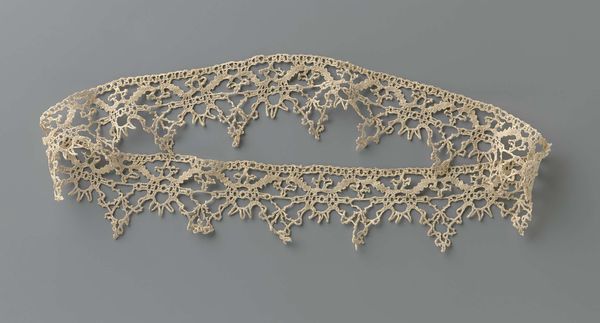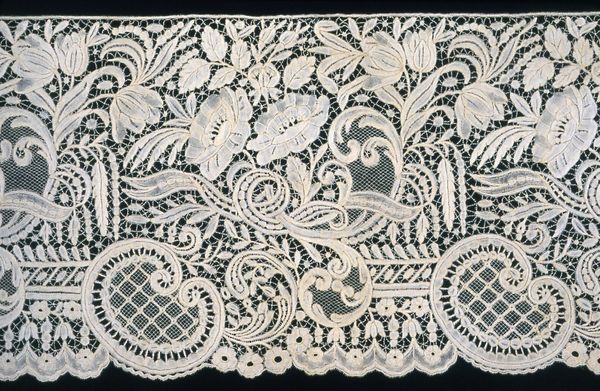
Kraag van kant gedragen door koningin Wilhelmina voor een getekend portret van Cor Visser c. 1939 - 1941
0:00
0:00
textile
#
natural stone pattern
#
man-made pattern
#
pattern
#
textile
#
repetitive shape and pattern
#
repetition of black colour
#
intricate pattern
#
pattern repetition
#
beaded
#
decorative-art
#
layered pattern
#
combined pattern
#
repetitive pattern
Dimensions: width 46 cm, height 7 cm, depth 32.2 cm, width 43 cm, height 23 cm, width 25 cm, height 15 cm
Copyright: Rijks Museum: Open Domain
Editor: This delicate lace collar, dating from around 1939-1941, was worn by Queen Wilhelmina for a portrait by Cor Visser. The detail is just incredible! What stands out to me is how such an ephemeral material projects power and status. What’s your take? Curator: It's interesting that you immediately associate it with power. Lace, historically, certainly was a marker of wealth and status. Considering the time period – late 1930s, early 1940s – the creation and wearing of such a collar become particularly poignant. The Netherlands were under Nazi occupation, and royal imagery played a key role in maintaining national morale. Editor: So, the collar isn’t *just* a collar, but a statement? Curator: Precisely. The choice of lace, a product of skilled labor and intricate design, evokes a sense of tradition and national pride at a time when both were under threat. Queen Wilhelmina, in exile, used radio broadcasts and imagery to represent a free Netherlands. How might the choice of presenting herself in lace have contributed to that image? Editor: It definitely reinforces the idea of enduring elegance and unbroken tradition, something the occupation couldn’t touch. Almost like a quiet act of defiance. Curator: Exactly. It becomes part of a larger narrative about national identity and resistance during wartime. The public role of the monarchy and even something seemingly frivolous, like lace, gets imbued with deeper meaning. Editor: I hadn't thought about it that way. I was focused on its aesthetic beauty. Seeing it as part of a larger socio-political strategy is fascinating. Curator: Art, even in its smallest forms, often plays a role in shaping public perception and reinforcing power structures, particularly during moments of crisis. Examining art through its social and political context unveils hidden layers of meaning. Editor: Thanks, I definitely learned a new way to think about art today! Curator: Likewise, your initial aesthetic reaction points to the power these images hold. Combining these approaches is where the true understanding lies.
Comments
No comments
Be the first to comment and join the conversation on the ultimate creative platform.
